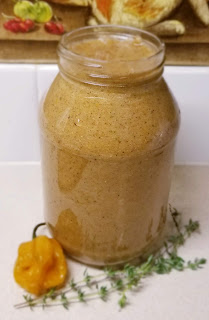INTERESTING FACTS ABOUT HUMMINGBIRDS
Its that time of year when the hummingbirds are migrating north. I just saw one buzzing by my feeder. I don't know about you but I look forward to seeing them each year and a bit sad when its time for them to head south. I think of them as an acrobat because they flip, flop, dip, and flutter all about. They are amazing little birds with an interesting personality. Below are some fun facts about the adorable little bird.
INTERESTING & FUN FACTS
- Did you know that hummingbirds eat 5 to 8 times an hour?
- Hummingbirds eat a variety of foods. Of course, we know they eat nectar but they also eat tree sap, pollen, and insects. Yes, insects including spiders.
- It is best to make food for their feeders because the red dye is harmful to them. Actually it can be deadly.
- They have delicate bills so you should be careful when positioning their feeders so they won't get their bills stuck in a window screen.
- Their food can ferment in the heat of the summer so you should change their food several times a week. Do not overfill, if it is hot only fill with what they will eat for a day or two.
- Cleaning their feeders help to prevent molds which is deadly to them. Vinegar is a good way to clean their feeders. Wash thorough though.
- Hummingbirds need to eat a bunch before they migrate so they have enough energy for their migration.
- They are very aggressive territorial birds and will fight over foods. Having more then one feeder helps.
- Stinging insects can kill a hummingbird so it is wise to choose a feeder that is made to keep out insects.
- Hummingbirds like fruit juice. You can stake a piece of fruit near their feeders and they will drink for the fruit.
- While they are known to eat spiders a large web can entangle them and an aggressive spider could make a meal of them.
- Staking fruit will also attract flies and gnats which is a protein supply for them to eat.
- Hummingbirds need a bit of grit to their diets to help them digest their food. Having fine sand or fine gravel around will help them.
- There are over 325 species of hummingbirds.
- They cannot walk nor can they hop.
- Hummingbirds have between 1,000 and 1,500 features. That sounds like a lot but it is not. They have the fewest features of any bird.
- They can fly up to 30 miles per hour but when diving they can go as fast as 60 mph.
- Hummingbirds have excellent eyesight but no sense of smell.
- They are only found in the Western Hemisphere.
- Hummingbirds can move sideways when perched on something.
- Their eggs are the smallest of all birds.
- Hummingbirds lifespan is between 3 and 12 years. Their environment has a lot to do with their lifespan.
Scott and I sit on our front porch as often as we are able to. It is always exciting to watch the hummingbirds play and come for a bit to eat. A few years ago I am pretty sure one nested very close to the porch. You would see it get all upset when anything came near it's "tree". It was not uncommon for me to sit outside and the tiny bird would land on a limb close by and sit for a while.
They are attracted to red but the hummingbird food you buy has a red dye in it that can be harmful to them. Since learning this fact years ago I have been making their food. It really is a simple recipe. Experts suggest to never use anything read in their food. You can stalk fruit but do not use anything red, even a nature form in their food.
HUMMINGBIRD FOOD
Ingredients
- 1 C water
- 1/4 C sugar
Directions
- Combine both ingredients in a pot and bring to a boil. Allow to cool and then put into the feeder.
It is important to boil the food because the will eliminate mold and bacteria that can kill a hummingbird.
There are tons of more facts on hummingbirds. They really are neat little creatures.
ENJOY!!
ENJOY!!






I think I’ve read you can use beet juice in their food.
ReplyDeletePam, I think why people want to use beet juice is for protein. Supposedly that is a huge no no. Again I am only going on what I have read and by no means am I an expert, but providing nature protein is the only safe way. I think the stalking of the fruit would be good way of providing protein because it will encorage flies and gnats.
ReplyDelete